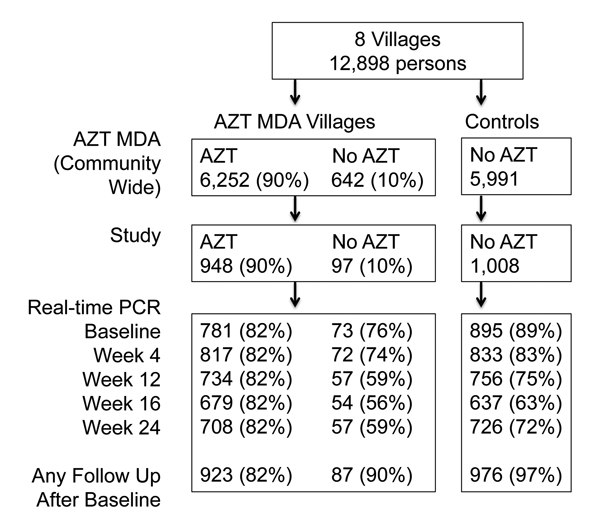Volume 20, Number 6—June 2014
Research
Short-Term Malaria Reduction by Single-Dose Azithromycin during Mass Drug Administration for Trachoma, Tanzania
Figure 1

Figure 1. Flowchart of participants in study of short-term malaria reduction by single-dose azithromycin (AZT) during mass drug administration (MDA) for trachoma, Tanzania, January 12–July 21, 2009AZT MDA (village-wide) and study panels show that 90% of persons who were intended to receive AZT received this drugTotal study participants with ≈1,000 in each group, shown in the study panel, contributed samples that are shown in the real-time PCR panel at each sampling timePercentages in the real-time PCR panel used values from the study panel as the denominator.
1Current affiliation: Pfizer, Inc., New York, New York, USA.
Page created: May 16, 2014
Page updated: May 16, 2014
Page reviewed: May 16, 2014
The conclusions, findings, and opinions expressed by authors contributing to this journal do not necessarily reflect the official position of the U.S. Department of Health and Human Services, the Public Health Service, the Centers for Disease Control and Prevention, or the authors' affiliated institutions. Use of trade names is for identification only and does not imply endorsement by any of the groups named above.